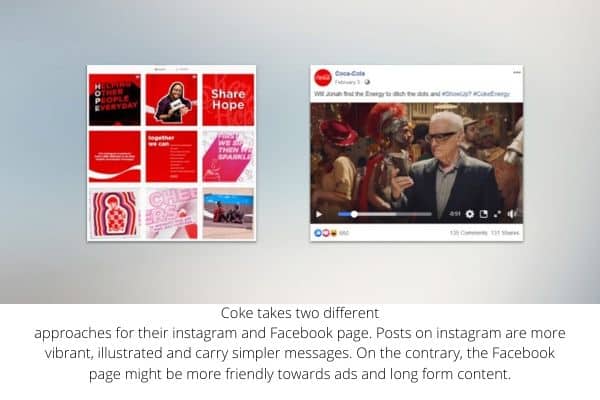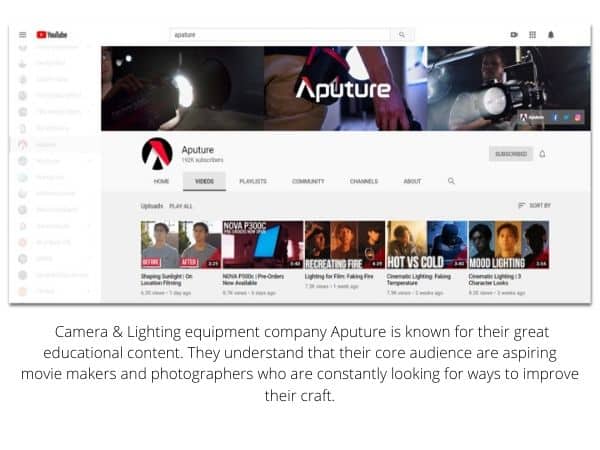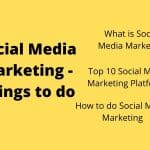Content marketing is a part of digital marketing. Here I am sharing my experience with content marketing strategy. 7 questions you need to ask yourself before creating your next content strategy.
You don’t need to be a creative genius to create good content. Whether you’re a Fortune 500 company or a small mom & pop shop, you are equally capable of telling your story with amazing branded content.
In my years of experience creating content for both clients and my creative agency, I’ve found that effective content marketing is usually a product of good creative processes rather than a burst of spontaneous creative genius.
Lately, I’ve been thoroughly examining my team and our process to unravel the daily rituals that we are unconsciously participating and lay it out on pen and paper.
I have found that all the best content ideas came about by asking these 7 questions:
1. Where will people view this content?
Content Marketing is like Real Estate. It’s all about location!
It is important to ask yourself – where will my audience see my content?
As a digital marketer, you might be spoilt for choices when it comes to choosing a channel for your content. Whether it’s Facebook, Instagram, or Youtube, your content should tie in with people’s expectations from the platform.
For instance, Instagram is a visually driven platform that demands beautiful imagery and visually appealing photos. Instagram users expect to see visual stories from the people and brands they choose to follow. So it makes sense that you create brilliant images and graphics to grab your audience’s attention.

Similarly, other platforms like Youtube and Facebook also have their strengths and weaknesses that need to be considered. Take Videos for example. According to this article by Hubspot, how people watch videos on different platforms can widely vary.
Hubspot’s data suggest that a user on Instagram might view videos for 30 Seconds on average. Whereas he could spend 45, 60, and 120 seconds on Twitter, Facebook, and Youtube respectively.
2. How are people interacting with each other?
Memes, Emojis, GIFs, and Twitter screenshots are acceptable ways for brands to communicate with their audience in 2020.
If you’ve scratched your head wondering why a fortune 500 company might share memes on their Facebook page, then try to observe how people interact with each other on social media.
Memes are just one example of how brands relate to customers. Content creators often follow the cultural waves and blend in seamlessly with the platform and/or community.
Note that every social media platform has its own culture and modes of communication.
Instagram for example, uses Q&As and Poll features in their stories to increase engagement. Youtube has its chat bar for live videos. Explore these interaction channels to get the best out of your content.
3. What tribes do your customers belong to?
Social Media has the power to connect people based on collective hobbies, interests, and beliefs. It fosters communities and conversations. What’s even more interesting, is that every platform has evolved differently to cater to different tribes and groups.
Why are these tribes important?
Tribal Marketing is not new. In a survey conducted by Facebook, 72 % of all social media users see brands as fostering communities through their social platforms. Marketing tribes open up amazing opportunities for brands to increase loyalty and engagement with their customers.
4. How does you brand fit in to the conversation?
For some brands belonging to a tribe might be easier than others. Canon and Nikon fit right in with Photographers. Nike fits in with Fitness enthusiasts and Complex could feel right at home with hip-hop listeners.

If you’re having difficulty finding a tribe for your brand, then start your research by creating a brand persona. Try understanding what collective behaviors your customers engage in and then create content to cater to their interests.
5. What is your product and/or brand’s relationship with the customer?
When I started my career in marketing one of the most important lessons I learned was this:
“People don’t buy products they buy into a promise. Someone who’s buying a Mercedes isn’t purchasing a car. He is purchasing luxury and prestige. An expensive cologne by Dior comes with more than just a fragrance. It comes with the chance of securing a partner of your dreams”.
For some brands, this idea of a promise could be much simpler. Coca-cola’s communication is built around the idea of spreading joy. You can see their ads portraying happy families enjoying coke over dinner, people at a park, and similar positive images that uplift the brand. Your content should also reflect your relationship with the customer.
When creating your next piece of content figure out what your core promise to your customers is and find ways to incorporate them into your content.
6. What is your objective?
Why are you creating content today? Could it be that it’s a national holiday next week and you want to wish your customers or you’re offering a discount and you want to promote it?
Before creating your content, tie it down to one objective. Ideally, a framework like the Customer life cycle can help you standardize your content objectives.
About customer life cycle marketing
Customer life cycle marketing is the notion that your customer goes through several steps in their buying journey before making a purchase.
While every company has its own customer life cycle, a very common journey map could look something like this.
- Awareness
- Interest
- Consideration
- Intention
- Purchase
A common mistake brands make is not understanding what form of communication works best for each stage. For example, if you want to build brand awareness, a promotional discount is exactly the opposite of what you should be doing. In this case, discounts might work to bring in sales but they won’t raise your brand profile.
7. How does that fit in with the broader brand messaging?
Speaking of sending a message, your content should play on two separate levels:
- Your Brand’s core message
- Your current objective
Let’s go a bit deeper, if you’ve taken my last advice seriously, you’re probably creating content with an objective like getting more sales or using testimonials to build trust. No matter what your reasons are, start by writing them down and then, find how they match your brand’s core message.
In the end, your content should reflect both your objective and brand positioning.
Conclusion
This guide was written to help us come up with great ideas that are relevant to the Brand and/or their marketing objectives. What we’ve noticed is that every time we answered any one of these questions a little differently, our content strategy and ideas shifted ever so slightly but our brand relevancy remained intact.
If we decided to create content for Instagram instead of Facebook, our ideas would immediately shift to photoshoots and illustrations. When we moved from tribes who loved tech to tribes who were into sports, we would change our mindsets and brainstorm ideas about fitness and health.
Since we started asking these same questions before creating every piece of content, our ideas have not only flowed more smoothly we came up with more ideas and we did it at a faster rate. As a Digital Marketing Agency in Bangladesh, we highly recommend this process and believe that it can improve the quality of any content ideation and planning.
Related Articles





Pingback: Content Marketing Tools and Techniques | OS Digital World